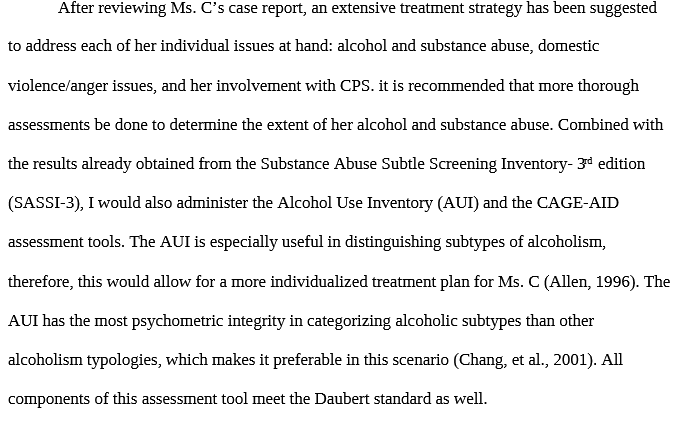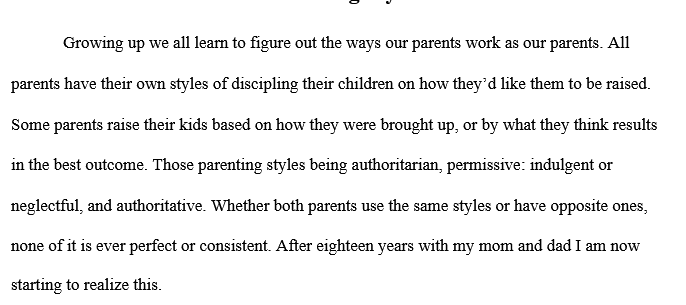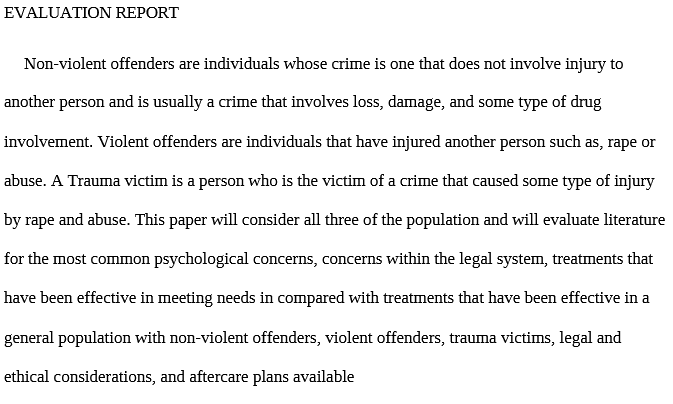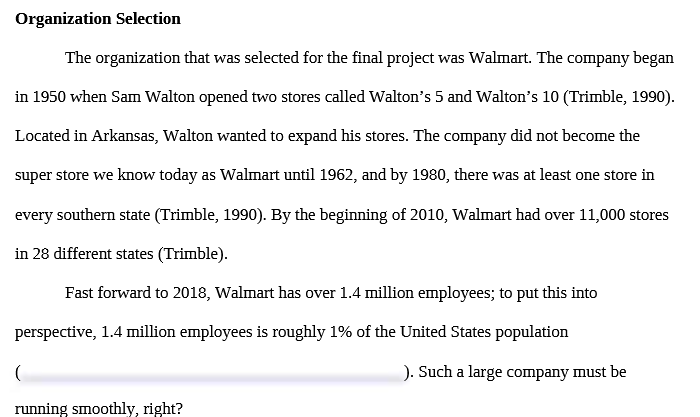PSY626 Psychology in the Courtroom 6-2 Milestone Three: CASE REPORT AND TREATMENT STRATEGIES.docx- Snhu
$3.99
PSY626 Psychology in the Courtroom 6-2 Milestone Three: CASE REPORT AND TREATMENT STRATEGIES.docx- Snhu
After reviewing Ms. C’s case report, an extensive treatment strategy has been suggested to address each of her individual issues at hand: alcohol and substance abuse, domestic violence/anger issues, and her involvement with CPS. it is recommended that more thorough assessments be done to determine the extent of her alcohol and substance abuse. Combined with the results already obtained from the Substance Abuse Subtle Screening Inventory- 3rdedition(SASSI-3), I would also administer the Alcohol Use Inventory (AUI) and the CARRIAGE D assessment tools. The AUI is especially useful in distinguishing sub types of alcoholism,therefore, this would allow for a more individualized treatment plan for Ms. C (Allen, 1996). The AUI has the most psychometric integrity in categorizing alcoholic sub types than other alcoholism typologies, which makes it preferable in this scenario (Chang, et al., 2001). All components of this assessment tool meet the Daubert standard as well.The CAGE-AID is useful in this case as well due to Ms. C also having substance abuse issues. This assessment tool is known for yielding accurate diagnoses in the prediction.
Description
PSY626 Psychology in the Courtroom 6-2 Milestone Three: CASE REPORT AND TREATMENT STRATEGIES.docx- Snhu
After reviewing Ms. C’s case report, an extensive treatment strategy has been suggested to address each of her individual issues at hand: alcohol and substance abuse, domestic violence/anger issues, and her involvement with CPS. it is recommended that more thorough assessments be done to determine the extent of her alcohol and substance abuse. Combined with the results already obtained from the Substance Abuse Subtle Screening Inventory- 3rdedition(SASSI-3), I would also administer the Alcohol Use Inventory (AUI) and the CARRIAGE D assessment tools. The AUI is especially useful in distinguishing sub types of alcoholism,therefore, this would allow for a more individualized treatment plan for Ms. C (Allen, 1996). The AUI has the most psychometric integrity in categorizing alcoholic sub types than other alcoholism typologies, which makes it preferable in this scenario (Chang, et al., 2001). All components of this assessment tool meet the Daubert standard as well.The CAGE-AID is useful in this case as well due to Ms. C also having substance abuse issues. This assessment tool is known for yielding accurate diagnoses in the prediction.
PSY626 Psychology in the Courtroom 6-2 Milestone Three: CASE REPORT AND TREATMENT STRATEGIES.docx- Snhu
Purpose of Referral:Ms. C was referred by the state courts for a mental health evaluation to determine her substance dependency potential relative to Child Protective Services (CPS) as well as her community supervision for probation. The information gained from the evaluation will be used at her upcoming CPS review as well as her probation hearing.Procedures:The different assessment type tests and used in this case study were the SymptomAssessment-45 (SA-45), the Substance Abuse Subtle Screening Inventory-3rded. (SASSI-3), and the Spousal Assault Risk Assessment (SARA). All of these assessments appear to pass the Daubert standard. The five components of the Daubert standard consist of if the assessment is grounded in scientific methodology, whether or not the procedures used in the assessment are valid and reliable, if there is a known error rate and what that is, whether or not the procedures in the assessment have been subjected to any peer reviews, and finally, if the procedures used in the assessment tool have been generally accepted in the scientific community (Lees-Haley, Iverson, Lange, Fox, & Al the Substance Abuse Subtle Screening Inventory- 3rdedition (SASSI-3).
PSY626 Psychology in the Courtroom 6-2 Milestone Three: CASE REPORT AND TREATMENT STRATEGIES.docx- Snhu
Ms. C’s results for this assessment tool were 70 for the Face-Valid Other Drugs scale (FVOD), 55 for the Face-Valid Alcohol scale (FVA), and 81 for the Obvious Attributes Scale (OAT). These results suggest Ms.C is continuing to abuse drugs and alcohol currently. The SASSI-3has two parts combined into one assessment: some very valid and upfront questions regarding substance and alcohol abuse as well as questions that are more subtle and discrete in nature to weed out and pin point individuals that have underlying issues with substance and alcohol but are not willing to admit these issues. This test has also been shown through studies to be both valid and reliable(Sadeghi, Najafi, Rostami, & Ghorbani, 2010). This assessment tool is preferable in Ms. C’s case due to the fact that it screens for both alcohol and drug abuse instead of just one or the other.The Spousal Assault Risk Assessment Guide (SARA) was given to Ms. C to further determine her violence risk level to be used for the CPS portion of her case. She received a raw score of 30 using the SARA assessment tool. Ms. C’s results from this assessment showed her to be at a high risk for child neglect and abuse. It is most preferable for her CPS case due to its proven adherence to the Daubert standard in predicting the likelihood of and future domestic violence situations with individuals.
PSY626 Psychology in the Courtroom 6-2 Milestone Three: CASE REPORT AND TREATMENT STRATEGIES.docx- Snhu
- PSY 211 – Lifespan Development (5015 Documents),
- PSY 215 – Abnormal Psychology (4335 Documents),
- PSY 108 – Introduction to Psychology (3759 Documents),
- PSY 223 – Statistics for Psychology Research (2652 Documents),
- PSY 216 – Psychology of Personality (1841 Documents),
- PSY 510 – Research Methods (1748 Documents),
- PSY 520 – Research Methods in Psychology II (1469 Documents),
- PSY 257 – Psychology (1451 Documents),
- PSY 310 – Criminal Psychology (1393 Documents),
- PSY 200 – FOUNDATIONS OF ADDICTIONS (1379 Documents),
Only logged in customers who have purchased this product may leave a review.







Reviews
There are no reviews yet.